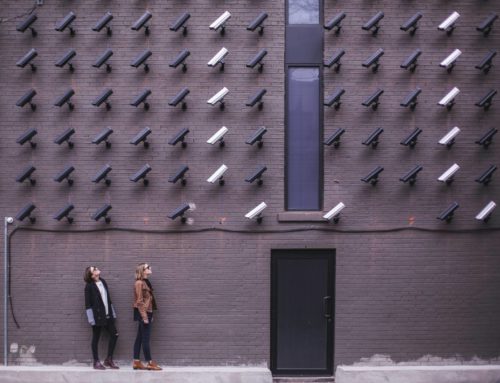One of the ironies facing organizations today is creating a secure environment for their staff and visitors while simultaneously fostering a look and feel that is warm, open, and inviting. Bars on windows and armed security guards don’t exactly scream “Welcome!”
So what does an organization serving customers or the general public do to protect itself and those inside?
To find an answer, we asked a veteran security consultant – someone who has spent decades protecting businesses, faith-based organizations, nonprofits, schools, and others – what he recommends. Here are three of his recommendations.
Become the Predator
When it comes to our own facility (or home, for that matter), how many of us look at it from the perspective of a would-be predator, burglar, or attacker? “You’ve got to think about your place the way the bad-guys do,” our expert says. “Those decorative shrubs situated on each side of your doors? Wonderful hiding spot.”
For most security consultants, a key first step in their assessment is to approach the facility with bad intentions. Whether that intent is to vandalize, steal, or worse, the facility owner or manager must consider their building from those perspectives and how best to mitigate such threats.
This also includes physical approaches to and from the building, including nearby highways, roads, and entry and exit points. For example, is the building near a local highway? Law enforcement knows that the closer the proximity to such ‘escape’ routes, the more attractive is the target to bad guys.
Deterrence is the Best Defense
Like it or not, your best defense is to create a look and feel that tells any predators they’re better off skipping your establishment for another one. That may sound unpalatable, but it’s a reality of the world in which we live.
“Nobody wants to feel like they’re sending the bad guys down the road, but your only other option is to make yourself a target,” says our consultant. “If your neighbor leaves her door unlocked while she’s at work and gets robbed, that’s not your responsibility. Keep locking your doors and let her discover the truth for herself – she’ll get there eventually.”
So how do you deter predators? By creating clear and obvious obstacles and deterrents that tell the bad guy:
- This is not going to be easy to enter
- You’re going to be detected, monitored, and recorded
- It’s going to take a lot of time
- You may not succeed in your efforts
In nature, a predator performs a mental risk assessment before attacking his prey. If they prey is especially large and/or adorned with defensive systems (think big teeth, claws, horns, powerful legs, etc.) the predator likely will move on to the prototypical old, lame, or otherwise defenseless (e.g. the neighbor with the unlocked doors).
“You want the bad guy to second- and third-guess his decision. If he’s thinking, ‘This is going to be hard and they’re going to have evidence for the police and the clock is going to be ticking,’ chances are good he’s going to move on.”
Don’t Be Shy About Your Defensiveness
In national parks where encounters with mountain lions are a possibility, visitors are told in such instances to ‘make yourself as big as possible.’
In other words, don’t run, don’t try to escape up a tree, because the mountain lion is going to win. Instead, stand tall, hold a backpack over your head, wave your arms, scream loudly – convey to the predator that you’re not going to be an easy meal so it’s best to move on.
How does that translate to building security?
- Ensure parking lots, entryways, etc., are well-lit and there are clear lines of sight to the parking area and entryways. Translation: you’re not going to sneak in here undetected.
- Put up signage indicating you’ve got security detection, monitoring, recording, and alerting systems in place. Translation: you’re being recorded and that recording will help the law catch and incarcerate you later.
- Put in place a highly visible hardening solution, such as a reinforced main door with a robust access system such as a keypad or card swipe. Translation: it’s going to be difficult getting inside.
- Ensure there are clear lines of sight from the building’s windows to the parking lot and entry ways. Translation: we see you.
- Design your parking lot with maximum visibility, lighting, and inaccessible camera systems. Translation: your vehicle is being recorded.
In short, to maximize your building’s security, consider it through the eyes of the bad guys. Initially, you may discover how vulnerable you are. But once your solutions are in place, you’ll see just how much safer you and your occupants are.
Want an expert, affordable security assessment of your Washington DC area establishment? Contact us.


Leave A Comment
You must be logged in to post a comment.